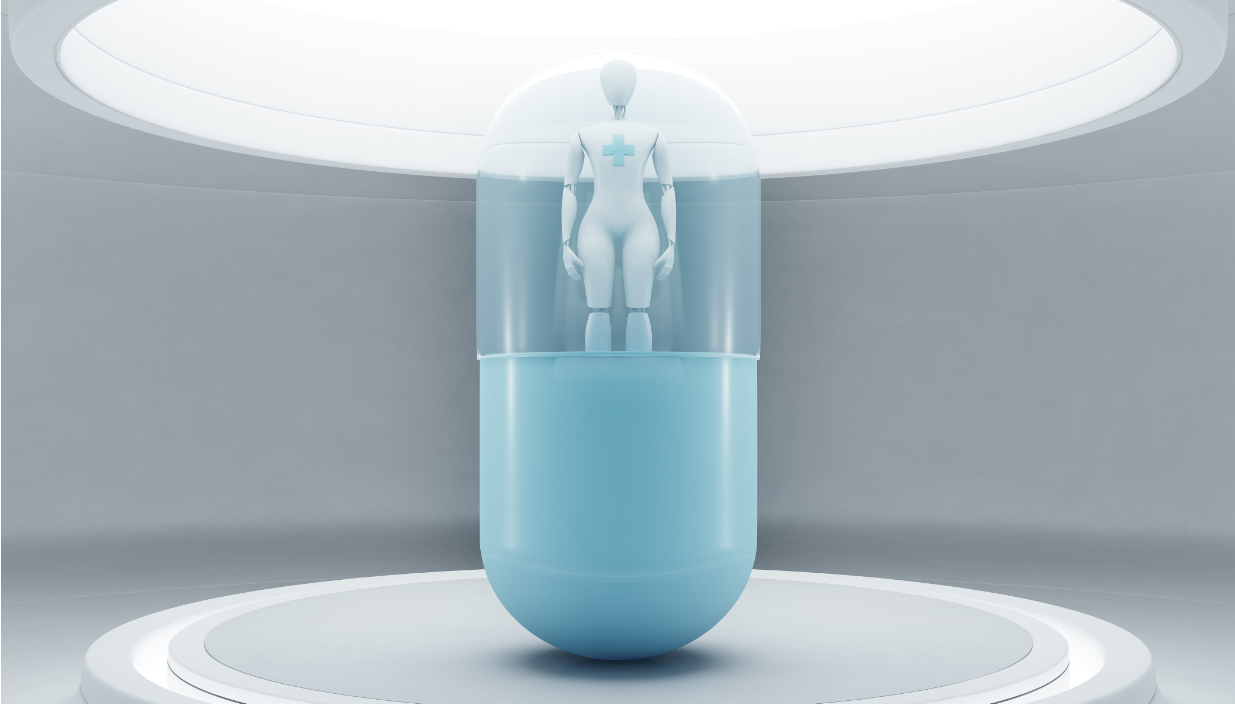
However, cancer can be cured if caught in the early stages and diagnosed correctly. Around 30–50% of cancers can currently be cured if patients are managed correctly and given the best possible treatment at the correct time. And this is where Artificial Intelligence comes in. It can greatly contribute to the diagnosis of the patient based on symptoms that are too minute for humans to detect. AI can also lead to a better treatment plan for individual patients based on the most effective plans for other patients who have similar types of cancers. This can be easily calculated by Deep Learning algorithms using a data set that contains the reports of all patients diagnosed with cancer in different parts of the world. Let’s see how many companies do this!
How can Artificial Intelligence help in Detecting and Curing Cancer ?
There are many companies (both big and small!) that are using Artificial Intelligence to detect various types of cancers in patients and also developing global cancer research data banks. Let’s see some of them.
1. Collaborative Cancer Cloud
Wouldn’t it be easier if doctors could instantly analyze large amounts of patient data to understand the best course of treatment for a particular form of cancer? This is certainly possible with Artificial Intelligence! The Knight Cancer Institute at Oregon Health & Science University has created a Collaborative Cancer Cloud in partnership with Intel that will do just that. Doctors can access the Collaborative Cancer Cloud and predict the best possible treatment for their patients using the case studies of real patients who had a similar form of cancer.
This is possible using Machine Learning that allows the usage of big data analysis of a large amount of Cancer molecular and imaging data in order to find the best solution. So much so that Oregon Health & Science University is confident they can reduce the time between cancer diagnosis and the start of treatment to just 24 hours by 2020. This will give a much higher chance of survival to many patients.
2. Veye Chest
A very important part of detecting lung cancer is finding if there are small lesions on the lungs from CT scans. And there is some chance of human error in this so that’s where Artificial Intelligence comes in! An Amsterdam-based company called Aidence has developed an AI system that can help radiologists detect, quantify and report the lung lesions so that effective treatment can be performed as soon as possible.
This AI system called Veye Chest also performs 3D rendering of the lung lesions so that they are easily visible. Currently, Veye Chest is already used in countries like the Netherlands, the United Kingdom, Sweden, etc. with similar AI systems being created in America as well.
3. CancerLinQ
The knowledge of various cases of cancer and their effective treatments is scattered all over the world? But what if there was one place where all this knowledge could be found so that doctors could understand various types of cancers and their effective treatments? This is what CancerLinQ wants to do! CancerLinQ is a non-profit organization of the American Society of Clinical Oncology (ASCO) that aims to improve the knowledge of cancer and find more effective treatments.
So CancerLinQ uses big data analytics to gather anonymous patient data from all over America so that uniform best practices can be learned from everyone. This allows different cancer clinics to compare their treatments with everyone else and make improvements where necessary. CancerLinQ also supplies this data to researchers so that they can work on eradicating cancer permanently.
4. Lymph Node Assistant (LYNA)
It is very difficult for humans to find out if cancer has metastasized i.e. spread out from the primary site to other lymph nodes. And this is a big problem in breast cancer. The sooner it is found if cancer has metastasized, the sooner radiation therapy, chemotherapy or surgery can be recommended. And this is the part where Artificial Intelligence is extremely helpful!
Google has created a deep learning-based tool called Lymph Node Assistant (LYNA) that can distinguish a slide with cancer from a slide without cancer with 99% accuracy. The earlier rate of identifying a slide with cancer was 38%, so this is a huge improvement! The Lymph Node Assistant also helps pathologists to increase their accuracy and can even half the time that is taken to review each slide for cancer. In addition to that, LYNA can also identify the positions of the very small cancer nodes in the body which are impossible to identify by a human.
5. Cancer Moonshot Research Initiative
Data sharing on Cancer at an international level would accelerate the research for treatment completely! And this is what the Cancer Moonshot Research Initiative is trying to achieve. This initiative would provide funds for Cancer Research and the data created during the research is then shared with the public. One particular requirement is that the data should be FAIR or findable, accessible, interoperable and reusable.
So then analysis can be performed on this large amount of collected data using Artificial Intelligence. This will result in new patterns emerging in the data that humans have not caught yet and which could even lead to a cure for cancer in the long term!!!
So, Can Artificial Intelligence Cure Cancer Now?
Artificial Intelligence has certainly contributed to many new breakthroughs in cancer treatment but it cannot cure terminal cancer as of now. Of course, it can lead to early detection and diagnosis which is also a question of life and death for the patients. As for curing terminal cancer in the future? Who knows! The situation is already changing in current times with many AI startups that are conducting research along with pharmaceutical companies. Also, big tech giants like Google, Microsoft, etc. are investing in cancer research with artificial intelligence and these may create a permanent cure someday.
What is Bipolar Disorder and How Can Artificial Intelligence Help in Detecting it ?
Imagine feeling very happy and excited one second. You feel like you have unlimited energy and you can take over the world!!! Then imagine feeling sad and depressed the very next second. You feel like there is no point in doing anything and may even feel suicidal. And then feeling happy and excited again.
Are you wondering what this is? How can anyone feel such extreme emotions one after the other? Well, these are the classic symptoms of a mental illness known as Bipolar disorder. And this is not a rare illness that affects a small number of people in the world. Actually, around 0.6% of people in the world are officially diagnosed with Bipolar disorder, which is a huge 46 million people!

And while there is no cure for Bipolar disorder, the good news is that it can easily be managed with a healthy and disciplined lifestyle or medicines in more severe cases. In modern times, advanced technology like Artificial Intelligence can also contribute to diagnosing and managing Bipolar disorder. This article deals with the ways in which AI can do that including ongoing research on this topic. But first, let’s see what Bipolar disorder in detail.
What is Bipolar Disorder ?
Bipolar disorder is a mental illness that results in extreme mood shifts known as mania and manic depression. Theses mood shifts occur in an alternating manner and they can create lots of problems in the patient’s life. Mania is a state of elevated mood in which the patient loses all inhibitions and feels emotionally high. They may be excited, extremely happy and full of energy. This state of mania can result in rash behavior like extreme spending, drug use, etc.
Then mania is followed by manic depression which is a state of extreme sadness and depression. In this state, patients may feel hopelessness, loss of energy, too little or too much sleep, suicidal tendencies, etc. Then the cycle repeats and manic depression is followed by mania and so on.
These continuous cycles can deeply affect a patient’s life and make it difficult to lead a normal life. Patients have trouble handling things that others take for granted like a steady job or college life, relationships, etc. While there is no cure for Bipolar disorder, the symptoms can be managed using different treatment options that are available. One of these is using Artificial Intelligence. Let’s see how!
How can Artificial Intelligence help in detecting Bipolar Disorder ?
There are many methods in which Artificial Intelligence can be used to detect the symptoms of Bipolar disorder in patients. Let’s see some of them.
1. Predicting Individual Outcomes for Rapid Intervention (PRIORI) :
Researchers at the University of Michigan have used AI to create an app that can predict the mood swings in Bipolar disorder patients so they can be managed accordingly. This is possible because one of the signs of a future mood swing is a change in patient speech patterns.
So the app can monitor the patient’s speech patterns which include speech volume, speed, and pitch. Then the AI could recognize the changes in the speech patterns as they occur and warn the Bipolar disorder patients and their family that a mood swing is about to occur. This could be done using a voice alert on the app that says “Maybe you should talk to your doctor soon”. This will change the current methods of bipolar mood swing management to “prevention” mode rather than the current “intervention” mode.
PRIORI will help Bipolar patients to live a much more carefree life where they don’t have to continuously worry when a mood swing could occur. Instead, they can become more independent knowing that they could easily get help as soon as an alert is sounded by the AI system.
However, one of the major challenges in creating this app is the individual nature of each patient’s speech patterns. So the AI will have to be adjusted to the normal speech patterns of each patient and then only it can identify the speech patterns that might foretell a mood swing. In addition to that, each culture and country have a different speech system and what is “normal” in that system. This will also impact how speech patterns are understood by Artificial Intelligence. However, with enough training data, this weakness can be handled so that the app can help as many people as possible.
2. Computer game to diagnose Bipolar Disorder :
Australian researchers associated with the Commonwealth Scientific and Industrial Research Organisation (CSIRO) created a game using Artificial Intelligence that can diagnose Bipolar Disorder. Currently, there is a 60% chance of wrongly diagnosing Bipolar Disorder as depression or some other mental issue but this chance may significantly reduce with this app.
According to Dr. Amir Dezfouli, a neuroscientist and machine learning expert, who is the lead researcher on this project, the computer game uses the behavioral metrics for Bipolar Disorder to diagnose a patient. While these metrics are complicated and hard to interpret easily even by trained physicians, it is much easier to accurately understand them using Artificial Intelligence. In fact, the AI algorithms used in this app have reduced the chance of wrongly diagnosing Bipolar Disorder to between 20% and 40% (from the earlier 60%).












0 Comments